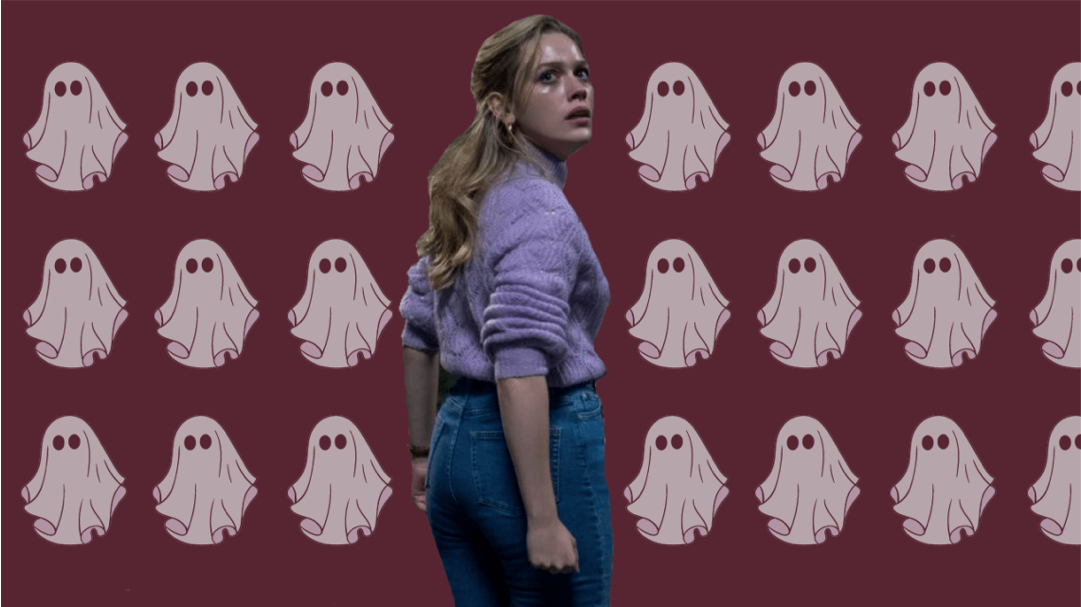If you’ve watched the Netflix drama series The Haunting The Hill House or Bly Manor (the second series), by the end of the show, you might have already figured out that the show is more than just horror. Mental health concerns, family attachments, and if you go a little deeper, trauma.
This show has very few jumpscares, but what actually moves you (or in some cases, scares you) is the past of each person and how it affects them in the present. I mean, yes, of course there are ghosts and scary people and supernatural instances in those houses, and yes, they are haunted. But the haunting of the ghosts also comes from the past, from their childhood and their experiences..
Both the series – Hill House & Bly Manor (which have completely different stories by the way) talk about the past, about losing loved ones, and how it affects them as adults. The coping skills of each character differ, some write about it, some indulge in drugs to forget, others stop showing much feelings, ice people out, and some are still very much engulfed in the past and some still have healthy coping mechanisms.
Each character seems to be haunted by their past but in very very different ways. Here’s the catch: all those feelings, thoughts and emotions, all of it still comes from the same story, same house, same time of their lives. It’s only their perspectives of it that change the game. What they saw, experienced and felt as children, if they were given agency at that age, all of it was affecting them as adults.
If you dig deeper into the show, there will be a few characters who you might reckon might have needed help for their mental health concerns from the very beginning, but were ignored or not given the agency to talk about it. And in the end, this only meant passing down the baton of trauma, negligence and dismissal to the other characters.
And if the Hill House intrigued me a lot, the second series had me on my toes!
The Haunting of Bly Manor is a study of humanity. About how our internal demons follow us around, never allowing us to forget the past. It shows how traumatic events become emotional wounds…”
Sergio Pereira, The Haunting of Bly Manor Is a Metaphor for Emotional Trauma
Haunting of Bly Manor – a completely different story with a few familiar faces from the first series has a few important lessons to learn : toxic relationships, the role trauma plays, family attachments, and main and biggest lesson: listen to children!
The first series shows us why it’s important to give children (or anyone for the matter) agency, to listen to what they have to say and pay attention to how they react and respond to different things. It also quite clearly shows the (horrific) consequences of not listening. Unlike the Hill House family and some characters from Bly Manor, who dismissed the childrens’ talks, tantrums and “play”, the nanny in Bly Manor particularly showed us how to listen and respond & why it is important to not dismiss them.
In mainstream horror shows, children are always used as “innocent babies” who are just ‘taken away’ by ghosts or even possessed. But here, the children themselves have a complex role to play. They talk about their past, they are lured by it, influenced by it and enact situations and react to these ghosts. The dolls, the anger and frustration in them and the horror of having lost loved ones so early in life, all of it shows – but does anyone pay attention? The difference lies in who listens and how they listen. The nanny listens, cares and questions. The other adults rationalise, say the children have been through a lot, and therefore, don’t question them, but this nanny does.
Children aside, all the adults in the story also face tragedy and loss, while the children react to traumas, developing their own ways to deal with them- adults cope with it in a new way. Unlike the first series, here the adults deal with more complex trauma, their own personal ghosts of the past and their memories.
Some become destructive (if anything, it’s toward their own selves), others might not even realise their traumas – denying it completely and falling into a pattern of habits to cope with them better till they’re forced to see it one way or another. Others use alcohol to get over their memories of the past or having an “alter ego” (or a vice in their head) who talks the worst at them.
And it only becomes more eerie, when the ghosts also seem to haunt the Manor because of their own ghosts of the past! No, they are not on a mission to kill, hurt, or take revenge. But a part of them seems to keep recalling various memories that led to the trauma in itself getting them stuck in the same cycle of ‘haunting’. (If I explain, it’d be a spoiler – watch the show, I promise it’s worth it!)
So, how do we reach a midpoint, a recovery, a solution?
Unfortunately, in both the parts, the show leaves a few things unexplained. But one thing is for sure: both, the Hill House and the Bly Manor mark themselves as a traumatic experience in the lives of the people who lived there. The haunting of each place still affects the characters but what mattered was how they coped with it. Reexperiencing for final closure might seem like a great way of coping & understanding the whys and hows (and a great finale for a horror show), but it is not the only or the best way.
And that’s okay. Maybe not everything in trauma can be explained, there is no answer to every “why”, but there can always be a way of coping with the experience of these ghosts of the past. And sometimes, the hauntings might just get worse if we keep trying to remember, reenact or rationalise these experiences. A better way of dealing with it, like the series mentions, is awareness of the feeling instead of running through memories to understand why. Awareness of the experience and feelings about the experience, of death, of toxic relationships, of each memory itself can help you cope with your ghosts, and that’s the first step.
“No live organism can continue for long to exist sanely under conditions of absolute reality;
even larks and katydids are supposed, by some, to dream.”
-Shirley Jackson, Author, Haunting Of The Hill House
Meet The Author








